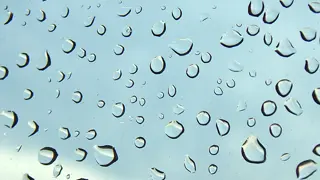
Rain and dirt slide away easily and cleanly, and leave no streaks.
In the beginning was the wheel
Our reluctance to perform manual labour has often spurred invention – the washing machine, the microwave oven, the vacuum cleaner – and a few millenia before that, the wheel. In 2001, glassmakers Pilkington took another step towards simplifying everyday tasks: self-cleaning glass.
High priorities
Not only is window-cleaning laborious, but working at heights can be exceptionally dangerous too. So making it safer was simple: remove the problem at its source. Pilkington's biggest challenge was creating a coating strong enough to remove dirt and grime, but thin enough not to distort the view through. It also had to be cost-effective to manufacture.
Two steps to success
The solution was to apply a thin coating of titanium dioxode to the glass. This performs two functions. The first is a ‘photocatalytic’ process. The coating reacts with UV light from the sun to break down organic dirt, and simultaenously makes it more difficult for dirt to stick.
The second is that the glass is ‘superhydrophillic’. When rain falls, the water spreads evenly over the surface, rather than in droplets – a bit like waxing your car after washing it.
